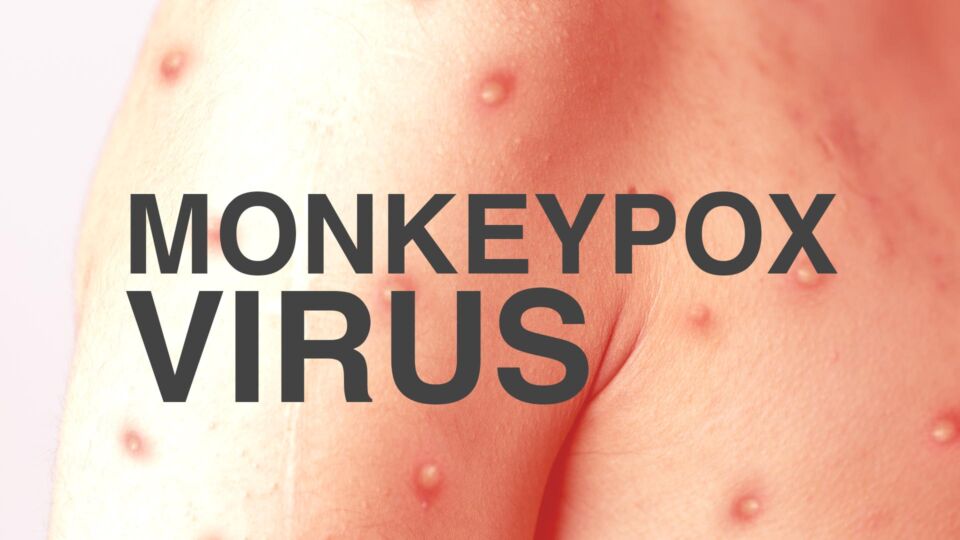
Experts share key information, including warning signs.
As the number of monkeypox cases continues to rise, the World Health Organization (WHO) has now declared monkeypox a “public health emergency of international concern”—a designation currently only used to describe COVID-19 and polio. Public health officials around the world and in the United States are increasingly urging the public to watch for warning signs.
Monkeypox is a rare disease caused by infection with the monkeypox virus. It usually occurs in Central and West Africa. But for reasons not yet known, the virus is behaving in ways never before seen. Since early May, monkeypox cases have been reported in countries that don’t normally see it. Before this, monkeypox was also not known to spread easily among people or to infect large groups at once. Now, it appears to spread through close contact.
Further complicating matters is that, so far, the majority of monkeypox cases this year have been in young men, many in men who have sex with men, putting health care experts in the difficult situation of needing to warn specific populations without creating a stigma and/or making incorrect assumptions about who is most at risk in their messaging to the broader community.
“We should be vigilant and not let our guard down, but we also should not panic,” says Marwan Azar, MD, a Yale Medicine infectious diseases specialist. “As noted by the CDC, the risk for most people remains low.”
On the other hand, this outbreak is much more widespread than we initially thought, and it’s hard to say where this is going, he adds. “We need to address it by diagnosing and controlling it as much as possible,” he says.
We talked more with Dr. Azar about what we know so far about this monkeypox outbreak.
What is monkeypox?
Similar to smallpox, but less severe, monkeypox was discovered in 1958 when two outbreaks of a pox-like disease occurred in colonies of monkeys kept for research in Denmark, according to the Centers for Disease Control and Prevention (CDC).
Despite being called “monkeypox,” the source of the disease is not known. However, African rodents and non-human primates, like monkeys, may carry it and infect humans. The first human case was reported in 1970.
Until this recent outbreak, nearly all cases in people outside of Africa have been linked to imported animals or with travel to other countries where the disease is common.
What monkeypox symptoms should you look for?
Normally, someone infected with monkeypox first presents with a nonspecific flu-like illness, including fever, headache, and malaise, Dr. Azar says. “Swollen lymph nodes can be a telltale sign, after which a rash appears. The rash usually starts off like a spot.”
The first lesions, according to the CDC, develop on the tongue and in the mouth before spreading to the skin and becoming raised. The lesions, which fill with pus, remain for five to seven days before beginning to crust. They typically scab over by the end of the second week and remain for about another week before starting to fall off. An infected person is contagious from the start of the flu-like symptoms until all scabs have fallen off.
“The rash traditionally seen with monkeypox starts in the center of the body, the face, or the head, and then moves outward to the extremities. That is the classic presentation,” Dr. Azar says. “But with the current worldwide outbreak, it does not always follow this pattern. In many cases, lesions are only seen in the genital area or around the anus. It’s important to recognize that these lesions could be mistaken for sexually transmitted diseases, such as syphilis or herpes, which also have lesions in those areas.”
Those infected might only experience a rash. Others may get a rash first, followed by other symptoms. Most illnesses clear up in two to four weeks. If you have new or unexplained rashes, sores, or other symptoms, you should see your health care provider.
Can monkeypox spread easily with close contact?
Monkeypox can spread in different ways. Before this current outbreak, the most common method was by direct contact with infected animals by way of a bite, scratch, or feces, or by preparing/eating meat or using products from an infected animal.
In the past, human-to-human transmission was rare, Dr. Azar says.
What’s troubling about the current cases is that monkeypox appears to be spreading through close contact with an infectious rash, scab, or bodily fluids. It can also be transmitted through respiratory secretions during prolonged face-to-face contact or during intimate physical contact, including kissing, cuddling, or sex. (It is not yet known if it is spread through semen or vaginal fluids.)
Additional transmission can occur from touching clothing, linens, or other items that came in contact with an infectious rash or body fluids. Pregnant women can also transmit the virus to their fetus.
Is monkeypox more contagious than COVID-19?
A silver lining about monkeypox, Dr. Azar notes, is that it is much less contagious than COVID-19. One way to measure this is to look at the number of people one person with the virus can infect. “With the original version of COVID, it was three or four, and now it’s closer to 15,” Dr. Azar says. “With monkeypox, it’s less than one under normal circumstances.”
There is also no evidence yet to suggest that the monkeypox virus has evolved or become more infectious. Furthermore, monkeypox is a DNA virus, which is inherently more stable, compared to COVID-19, an RNA virus. “An RNA virus is much more likely to have transcription errors copied and those mutations may lead to versions that are more transmissible,” Dr. Azar says.
Is monkeypox more severe than COVID-19?
Fortunately, monkeypox is typically a mild disease and this current outbreak has an extremely low fatality rate, Dr. Azar points out. However, children and people with immunodeficiency problems are at risk for more severe cases.
How can you prevent monkeypox transmission?
There are several different ways people can prevent monkeypox infection, including avoiding close, skin-to-skin contact with a monkeypox rash; not handling or touching bedding, clothing, or towels of a person who has monkeypox; and washing hands often with soap and water or using an alcohol-based hand sanitizer, especially after contact with people sick with the virus.
Dr. Azar advises the general public and health professionals to visit the CDC pages on monkeypox to familiarize themselves with signs and symptoms, as well as prevention techniques, many of which are similar to prevention strategies for COVID-19.
Can you get monkeypox from sexual contact?
Yes. According to the CDC, monkeypox can spread to anyone through close, personal, skin-to-skin contact, which can happen when you have sex. Examples include:
- Oral, anal, and vaginal sex or touching the genitals (penis, testicles, labia, and vagina) or anus (butt) of a person with monkeypox
- Hugging, massage, and kissing
- Touching fabrics and objects during sex that were used by a person with monkeypox and that have not been disinfected, such as bedding, towels, fetish gear, and sex toys
How can you lower your risk of contracting monkeypox during sex?
The CDC published an online guide on how to avoid monkeypox transmission during sex. The recommendations include:
- Have “virtual sex with no in-person contact”
- Masturbate together “at a distance of at least six feet, without touching each other and without touching any rash or sores”
- Have sex “with your clothes on or covering areas where rash or sores are present, reducing as much skin-to-skin contact as possible”
- Avoid kissing
- Limit sexual partners
Can anyone get monkeypox?
Yes. In this outbreak, the vast majority of cases, so far, have been among men who have sex with men (MSM) and have been linked to large gatherings of MSM people where transmission has happened, but it does not mean it only occurs in that population.
“Although it gained a foothold in the MSM community; it can easily do the same in other close-knit communities as well,” Dr. Azar says.
For the entire article go to: www.yalemedicine.org










